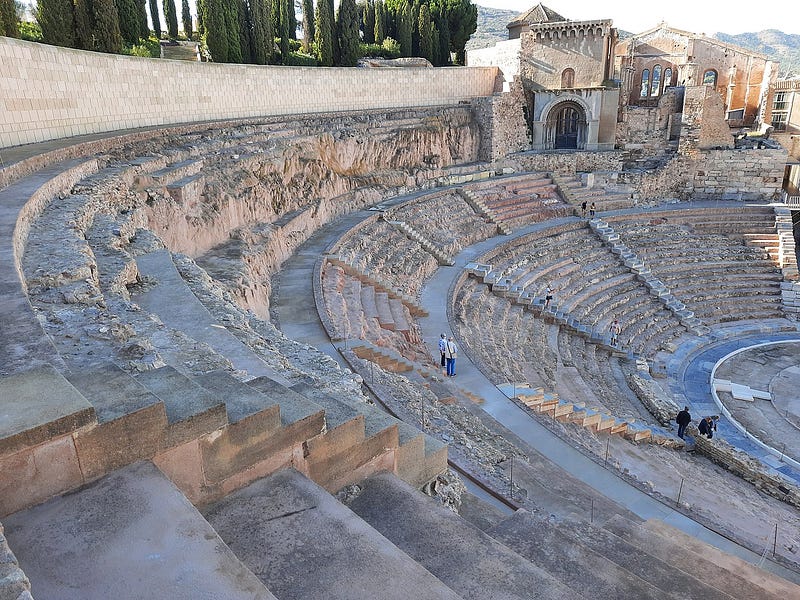Discovering Roman Theater Art in Cartagena, Spain
Written on
Chapter 1: Unearthing the Roman Theater
Recent archaeological efforts in Cartagena, a city in the Murcia region of Spain, have led to the discovery of substantial fragments from a grand mural that once adorned the walls of a Roman theater. This theater was unearthed during excavations that began in 1988.

The ancient theater, capable of hosting around 7,000 spectators, dates back to between 5 and 1 BC. Researchers have uncovered over 2,000 pieces of an expansive wall painting, which likely embellished the portico of the theater.
Section 1.1: The Portico and Its Grandeur
Experts believe that the extensive mural decorated the portico, a rectangular structure featuring columns that supported a roof. Positioned opposite the grandstand, behind the main stage, this architectural element was part of the scaenae frons—an intricately adorned backdrop for theatrical performances. Its design likely echoed the facades of imperial palaces, a common feature in Roman architecture reminiscent of the Greek stoa.
The scaenae frons was not only an aesthetic addition but also served practical purposes, housing dressing rooms for actors and preparation areas for performances. This architectural feature was prevalent in the Western and Southern Roman Empires, with remnants found in various locations, including France, Spain, Jordan, Libya, and Syria.
Section 1.2: Insights into Cartagena’s Heritage
Researchers express great enthusiasm regarding their latest findings. In 2006, a team unearthed an additional 1,500 fragments of portico decoration, bringing them closer to reconstructing the original appearance of the theater's stage front. Preliminary analyses suggest that the paintings may have portrayed Roman figures, possibly including emperors and high-ranking officials. However, scholars caution that the restoration process is still in its infancy, and definitive identification of the painted figures remains elusive.
In a recent official statement, Spanish archaeologists indicated plans to excavate the area of a former city garden adjacent to the theater. They aim to uncover evidence of an intricate plumbing system that supplied water to the fountains, which may have played a role in maintaining local vegetation, even during drought conditions.
Chapter 2: The Historical Significance of Cartagena
Cartagena, originally known as Mastia, was a prominent Mediterranean port city. Following its conquest in 228 BC by Hasdrubal the Elder of the Carthaginian Empire, it was renamed Qart Hadasht, meaning "New City" in Phoenician. This city served as a strategic base for further conquests throughout Spain.
In 209 BC, during the Second Punic War, Roman forces commanded by Scipio Africanus the Elder captured Carthago, leading to its renaming as Carthago Nova to distinguish it from its North African counterpart. Under Julius Caesar, Carthago was granted Latin rights, marking its importance in the imperial era, particularly as a significant silver mining hub.
No youtube to insert. Don't generate youtube directive.